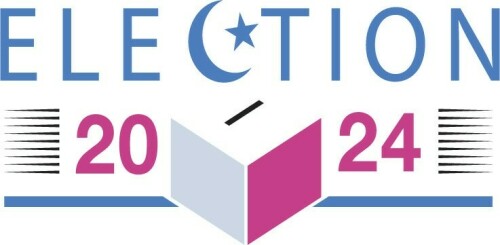How much political parties spend on campaigning during elections cannot be estimated with a fair degree of certainty, but it is possible to triangulate approximately how much spending is generated in the run-up to general elections.
The Election Commission of Pakistan (ECP) has mandated a spending ceiling of Rs10 million for candidates campaigning for the National Assembly seats, and Rs4m for candidates campaigning for the Provincial Assembly seats.
Considering how Pakistan is largely a cash-oriented economy, with currency in circulation of more than Rs8.6 trillion sloshing around, it is difficult to determine whether any candidate breached the limit or not in the absence of any audit trail.
Elections are held for 266 National Assembly seats and for 740 Provincial Assembly seats.
Economic activity generated by spending on campaigning during the election run-up could be anywhere from $540m to over $1.3bn
The ECP notified a list of 17,816 candidates who would be contesting elections, of which 11,785 are independent candidates, and 6,031 are candidates belonging to various political parties. Anecdotal evidence suggests that candidates belonging to political parties would have higher spending power, given the ability of the political party to raise campaign funds through a much bigger platform relative to independent candidates.
Relying on mandated spending ceilings, we can assume that candidates representing a political party will hit their spending limit (although they may easily go beyond), while independent candidates can cover up to half of their assigned limit.
Different estimates exist based on different assumptions. By one estimate, if ceilings mandated by the ECP are actually followed, spending on campaigning by both independent and party-backed candidates would be in the range of Rs69 billion.
Suppose we assume that all candidates contesting would be hitting their spending limit (which is unlikely, but some may spend much more than their limit). In that case, campaign spending based on mandated ceilings can be calculated to be around Rs102bn.
Anecdotal evidence available from different political parties suggests that the top two candidates backed by a political party in any electoral race spend in the range of Rs100m for a provincial assembly seat and Rs200m for a national assembly seat.
The amounts may vary depending on the geography and socioeconomic significance of the constituency. Utilising these estimates for the top two candidates in each constituency, the spending totals Rs254.4bn.
Assuming that other candidates who never really stood a chance of winning just spend within the limits mandated by the Election Commission, we can consider more spending of Rs57bn — resulting in total spending of Rs311bn for campaigning. This is essentially more than a billion dollars and can be deemed as the upper limit for this estimation exercise.
In the academic paper, “How Election Process is Rent-Seeking in Pakistan? A Case Study of Local Bodies Election in District Pakpattan”, published in 2020, and authored by Anwar, Shah, and Yunus, estimates that approximately Rs473.27m were spent on elections of 54 union councils in Pakpattan, Punjab, in 2015.
It can be estimated that, on average, Rs8.7m was spent on a single union council by candidates for campaigning. Since 2015, cumulative inflation has been in excess of 160 per cent.
Adjusting the average amount of Rs8.7m estimated above for inflation, it is estimated that the same would now be equivalent to Rs22.78m. There are 7,979 union councils in Pakistan; the estimated spending would be in the range of Rs182bn.
The spending exercise imposes rents on the economy, which successful candidates can extract through the allocation of discretionary developmental spending
It is important to note that the estimation has been extrapolated from data acquired from union council elections — spending on general elections may be vastly at a different scale.
The ECP is expected to spend more than Rs49bn for the general elections, with more than 92,500 polling stations, of which 17,500 polling stations are categorised as highly sensitive, while 32,508 have been classified as sensitive, and the remaining being designated as normal. This is an additional amount that will be spent during the run-up to the elections, and beyond, and becomes part of the election economy.
Adding the budget of the ECP of Rs49bn to the above estimates, it can be estimated that by utilising spending limits mandated by the Election Commission of Pakistan, the total spending would be in the range of Rs151bn.
Similarly, utilising spending estimates from union council elections, it is estimated that total spending would be in the range of Rs231bn. Finally, utilising anecdotal data for the top two candidates in each constituency and mandated limits for all other candidates, it can be estimated that total spending would be in the range of Rs360bn.
Effectively, additional economic activity generated by spending on campaigning during the run-up to the elections would be anywhere from $540m to more than $1.3bn.
The kerfuffle that led to the symbol of the bat becoming a symbol non grata may pull these estimates down since one of the more popular political parties in the country does not really have a symbol to represent them.
In the absence of any audit trail or substantiation of how much each candidate has spent, the spending exercise effectively imposes rents on the economy, which are then potentially extracted by successful candidates through various modes, whether that is through the allocation of discretionary developmental spending, or other schemes that may, or may not serve welfare the people of the constituency.
The writer is an independent macroeconomist and energy analyst
Published in Dawn, The Business and Finance Weekly, February 5th, 2024















































